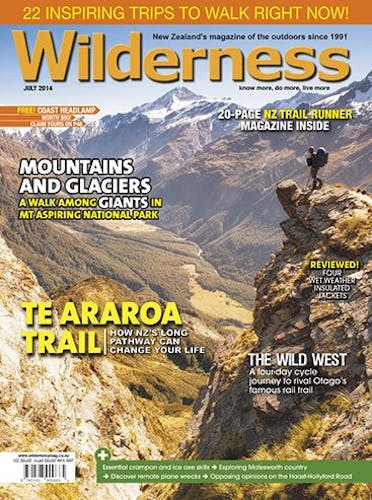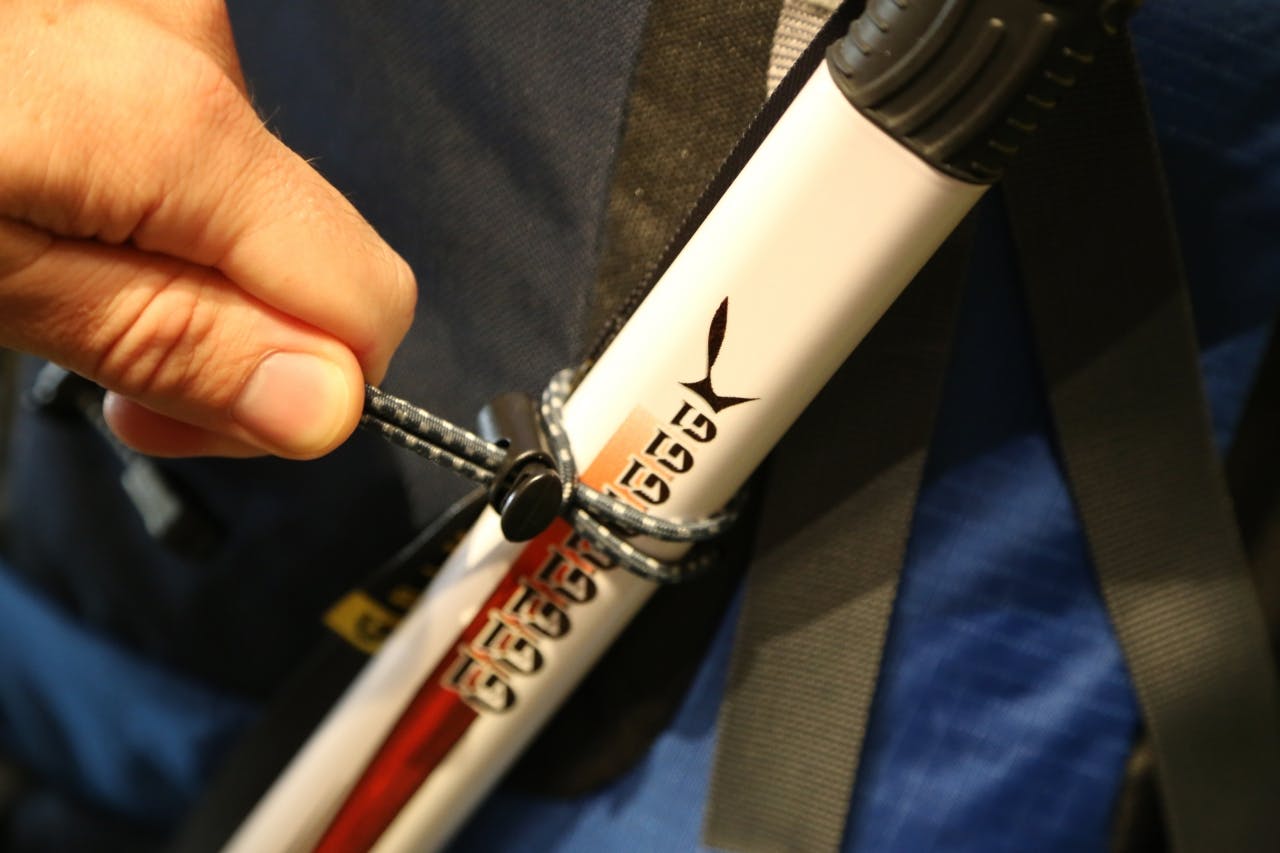Essential skill: attach an ice axe to your pack
You can attach an ice axe to pretty much any pack, whether it’s an alpine pack or not. Most packs have at least one loop at the bottom and another at the top that will do the job. But there’s a bit of a knack to getting it right. Ben Sinclair explains how:
- Place the spike / handle end of the axe down through one of the loops at the base of the pack, so the axe head is resting on the loop with the pick facing inwards (to prevent injury)
- Flip the axe vertically 180˚ so the handle is now towards the top of your pack
- Secure the handle with whichever loop seems the most suitable. It’s fine to attach your axe either diagonally across the back of the pack or pointing directly upwards
- Your axe is now safely secured.
– Ben Sinclair is managing director of Auckland outdoor retail store Living Simply
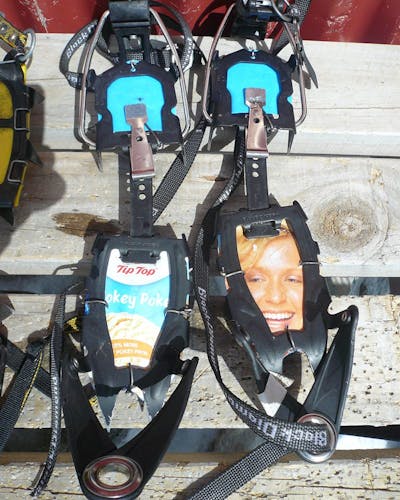
An old ice cream container lid makes an effective anti-balling plate for crampons
Anti-balling plates on the cheap
Geoff Wayatt explains how old ice cream lids can put a smile on the face of your crampons
Crampon anti-ball plates are now common and make sense in soft snow conditions because they reduce the occurrence of ‘balling-up’, especially in partially settled storm snow.
When you’re roped up, it’s vital that both you and your climbing partner has anti-ball plates on them. If they’re reluctant to commit to the cost, suggest cutting up an ice-cream container lid and wiring it to the underside of the crampons.
They’ll last a few trips, save a lot of laborious crampon de-balling by ice-axe tapping, and even prevent an unintended slide.
– Geoff Wayatt is an alpine guide for Mountain Recreation
Tips for safe crampon use
After buying crampons, you’ll want to practise ascending, traversing and descending snow slopes, progressing from easy-angled, soft slopes to steeper, icier slopes. Glenn
Pennycook offers a few tips for getting started.
- When using your cram
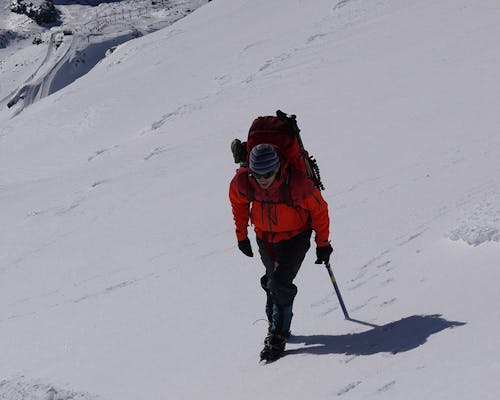
When traversing slopes, roll your ankle to ensure all points of the crampon contact the surface
pons for the first time, you might find they come off your boot until you fine-tune the sizing
- Tuck away long strap ends so there’s no chance of tripping
- Ignore the front points of the crampons – you won’t be able to use them until you are wearing stiff-soled mountaineering boots
- To begin with, and especially on ice and hard snow, place all base points of the crampon (the eight or ten points that face downward) on the snow surface, flexing your ankle if necessary. If you’re only using the inside or outside points of the crampon while traversing a slope, you can skate off. With time, you will learn when you can relax the ankle and only use the inside or outside points (such as when the snow surface is soft or when you are wearing mountaineering boots with stiff soles)
- Practise walking down a safe but steep slope early on, before you are high on the mountain. Face out from the slope and bend your knees in an exaggerated manner, keeping your axe to the side or behind
- When walking downhill, it’s easy for the points at the heel of the crampon to catch on items hanging from your pack or harness; move these items to prevent tripping
- Be aware of snow building up on the base of the crampons late in the day when the snow turns to mush. You can release the snow by tapping your crampons with your axe every other step
– Glenn Pennycook is director of iclimb.co.nz
When’s the best time to put crampons on?
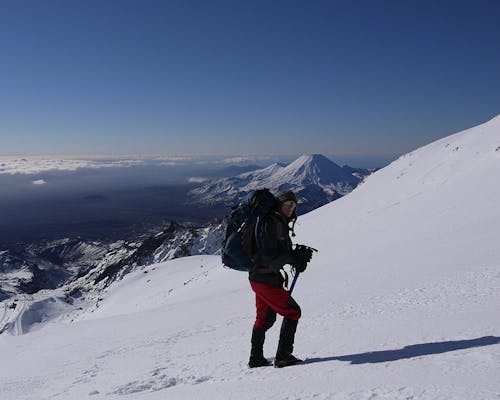
What do you mean I should be wearing crampons?
Photo: Alistair Hall
It’s vital to get right and, as Andrew Hobman explains, a lot depends on the conditions
The question of ‘when to put your crampons on’ has no simple answer. ‘Before you need them’ is an obvious and common response, but in reality the decision should be based on a number of factors including your skill level, the snow surface conditions and the terrain ahead.
On some days the surface may be frozen hard and crampons will be required to cross a relatively low angled 30-degree slope. By the afternoon this same snow slope could be soft with each step sinking up to your ankles.
Always think ahead and put crampons on well before they’re required for your safe travel and where you can comfortably attach them to ensure they are correctly fitted.
– Andrew Hobman is the Mountain Safety Council’s avalanche and alpine programme manager
How long until sunset?
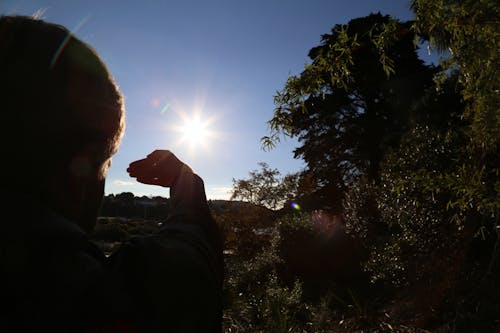 This technique may not be the most scientific or accurate way to measure how far off sunset is, but it should give you an idea of when to head back to base if you’re without a watch.
This technique may not be the most scientific or accurate way to measure how far off sunset is, but it should give you an idea of when to head back to base if you’re without a watch.
The closer you get to the North or South Pole, the less accurate this becomes (as the sun hovers above the horizon for longer), but in New Zealand it could definitely come in handy.
Hold your arm out full length towards the sun with your palm facing you and your fingers closed together and pointing horizontally
Count the finger widths between the sun and horizon. Each finger is equivalent to 15 minutes of daylight





